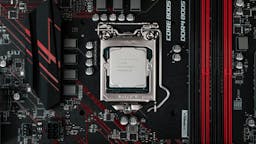How to Create a Good Design Workshop
Design workshops play a vital role in the creative process for designers, developers, and other professionals. These workshops encourage collaboration, ideation, and problem-solving, leading to innovative design solutions. Here are key steps to create an effective design workshop.
Setting the Stage
Define the workshop's purpose and objectives clearly. What do you want to achieve? Articulate the goals so that everyone understands them. This clarity will guide the structure and activities of the workshop.
Selecting the Right Participants
The workshop's success relies on the involvement of participants. Choose a diverse group with different perspectives, skills, and expertise. Including designers, researchers, developers, and stakeholders will enrich discussions and lead to well-rounded outcomes.
Creating a Supportive Environment
Foster a safe and supportive atmosphere that encourages collaboration. Provide essential resources like whiteboards, sticky notes, and pens. Ensure the space is comfortable for open dialogue. Breakout areas can help facilitate smaller group discussions.
Establishing a Clear Agenda
A well-structured agenda keeps the workshop productive. Outline activities and exercises, along with estimated times. Share the agenda beforehand so participants are prepared. Stay flexible to adjust the agenda as needed for deeper exploration of ideas.
Icebreakers and Energizers
Incorporate icebreakers and energizers to encourage interaction. Simple activities like "two truths and a lie" can help participants connect. Energizers, such as stretching or quick physical games, keep energy levels up throughout the workshop.
Ideation Techniques
Utilize various ideation techniques to foster creativity. Effective methods include brainstorming sessions, mind mapping, and sketching exercises. Encourage participants to explore unconventional ideas and think outside the box.
User-Centered Design Activities
Include user-centered design activities to align outcomes with user needs. Activities can involve user research, empathy mapping, persona creation, or user journey mapping. This approach helps create more impactful and user-friendly solutions.
Prototyping and Feedback Sessions
Encourage prototype creation to visualize ideas and gather feedback. Provide tools for participants to create low-fidelity prototypes. Organize small groups for prototype development, followed by feedback and critique sessions to refine ideas.
Collaboration and Decision Making
Promote collaboration and effective decision-making processes. Encourage participants to share their perspectives and build upon each other's ideas. Facilitate discussions to help reach consensus and prioritize ideas for implementation.
Documenting and Sharing Outcomes
Document outcomes to maximize the impact of the workshop. Capture key insights, ideas, and decisions made during the session. Create a visual summary, such as a presentation, to share findings engagingly. Distribute this documentation to all participants for future reference.
Design workshops are valuable for fostering collaboration, creativity, and alignment. Following these steps can help create an environment where innovative ideas flourish, leading to impactful design solutions.












